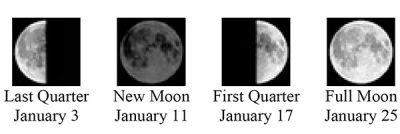Envisioning the Wonder of Far Away Stars in Our Winter Sky
Opinion Advocates for ideas and draws conclusions based on the author/producer’s interpretation of facts and data.
 By Scott Levine
By Scott Levine
Now that we’re past the winter solstice, we’ll start to see more daylight in our days, little by little, all the way until June’s summer solstice.
We tend to think about winter as being the darkest time of the year, which is true, but it’s nice to know that when the world is at its darkest, the days are actually getting longer and bringing us more light.
Let’s head out and look for the stars of Orion’s belt, which we talked about last month, and then imagine a line running through those three stars down toward the ground. Before long, we’ll come to a very bright light near that line. That’s the star Sirius, the brightest star in the night sky.
Now, if we try to widen our gaze and take in more of the scene, we’ll see one of the most beautiful sights in all of casual astronomy. Around Orion, we’ll see six of the night’s brightest lights. Together, these stars form a broad ring called the Winter Hexagon.
From here on the ground, it’s hard to overstate how huge this patch of sky looks. It’s too big to take in in one glance, and it takes the moon four nights to get across it, starting from near the Pleiades and Hyades clusters. Every fall, when we catch up with these stars, it’s like catching up with old friends.
 It often gets tiresome to try and grasp the incredible distances to the stars. They’re just too enormous. On top of that, the night sky just looks like a flat sheet overhead, without any depth or real texture to it. The hexagon’s stars, though, are more than just a few bright lights. They hide an incredible secret that can help us with this.
It often gets tiresome to try and grasp the incredible distances to the stars. They’re just too enormous. On top of that, the night sky just looks like a flat sheet overhead, without any depth or real texture to it. The hexagon’s stars, though, are more than just a few bright lights. They hide an incredible secret that can help us with this.
Let’s start with Sirius. The night’s brightest star is about eight light years away. That means it’s so far from us that its light takes about eight years to travel to our eyes. So, the Sirius we see is tonight, is the Sirius of 2015. If you know a third-grader, you can tell them that that light left for their eye right around the time they were born.
Heading counterclockwise around the hexagon, we’ll come next to Procyon, which is, at 11 light years, about the age of a kid just starting middle school. After that, we’ll come to Pollux. At 34 light years, its light is about the age of someone likely settled into their career and life. Gorgeous yellow Capella is 42 light years away. Now we’re starting to feel the itch of middle age.
Over the top of the hexagon, we go to red Aldebaran, near the Pleiades. It’s about 65 light years away, about the age of a typical retiree. The last star on the loop is Rigel, around 700 light years. It’s much too far to think of as a mile marker on the scale of a human life, but maybe Yoda’s?
This is all just a wonderful coincidence; the stars have no worry about our lives, but as they spiral deeper and deeper into the galaxy, it reminds me that there’s magic everywhere we look, every night of the year.
Thanks for reading this year. Happy new year, and clear skies!
Scott Levine (astroscott@yahoo.com) is an astronomy writer and speaker from Croton-on-Hudson. He is also a member of Westchester Amateur Astronomers, a group dedicated to astronomy outreach in our area. For information about the club including membership, newsletters, upcoming meetings and lectures at Pace University and star parties at Ward Pound Ridge Reservation, visit www.westchesterastronomers.org.

Examiner Media – Keeping you informed with professionally-reported local news, features, and sports coverage.
